Green Boots is without a doubt the most famous dead body on Mount Everest, it is so famous that climbers use it as a checkpoint on the way up. Yesterday we narrated the tragic story of another famous climber who lost her life while descending the same mountain, Francys Arsentiev, the sleeping beauty of Mount Everest, you can find it here.
This is the tragic story of a then 28-year-old police officer from the Indo-Tibetan Border Police wing who died in the infamous 1996 blizzard on Mount Everest just like most climbers who die from exhaustion on their way from the summit towards camp 4, he found a cave and took refuge from the chilly weather and violent winds, as if taking a nap in foetal position with arms wrapped firmly around his torso while his legs extend onto the pathway, showing off koflach green boots that he wore that fateful day when he was on duty.
He is the famous body, lying right at the entrance to the Rainbow Valley for nearly 20 years on Everest since his death along the popular northern approach in Nepal that is frequently used by Easterners (Chinese, [USSR] Russians, and many Indians) and inspired numerous books/movies like Jon Krakauer’s best-selling book Into Thin Air and, more recently, the big-budget thriller Everest 2015.
More than often people have used the Green Boots Cave as a resting place, and up until around 2014-2017, climbers would step or jump over his legs when there was light snow cover.
In most people’s eyes, Paljor was a hero, but at the same time, his death was marred by controversy, with questions arising, whether he and his two other partners Tsewang Samanla and Dorje Morup died in vain, out of lust because the climbers in their party just wanted to attain their goals of reaching the summit and in turn ignoring the red flags.
Most climbers die after Camp 4, from exhaustion on the way back. The point between this camp and the peak is labelled the Death Zone. Because, with no romanticization, if you can not walk you will die. Period.
British climber and filmmaker Matt Dickinson captured the first known video footage on Green Boots in May 1996. The video may be seen in the “Summit Fever Brian Blessed Documentary” at minute 42:22. (1996).
The story of “Green Boots” stands out among the countless accounts of those who have lost their lives on Mount Everest through various means. When the guy who is thought to be the person behind the pseudonym, Tsewang Paljor, set off on his last trek in the spring of 1996, he had no idea that his eventual demise would become a fundamental part of the legend surrounding Everest. Before he became known as Green Boots, Tsewang Paljor was a skilled climber who had a deep love for the mountains that characterized his home region of Ladakh before receiving his nickname. On the 10th of April in 1968, he was born in a little town in India that was known as Sakti. His early efforts in climbing were set against the backdrop of Asia’s rough landscape, which supplied him with the ideal environment. His climbing CV includes several high peaks, which presented him with the opportunity to demonstrate his abilities and strengthened his determination to climb the globe’s highest peak. Climbing was more than just a pastime for Paljor; it was a calling that led him to the Indo-Tibetan Border Police (ITBP), a position that allowed him to combine his professional life with his love of the mountains. Before we continue with this tragic story of a brave young Indian sherpa whose real name is Tsewang Paljor tragically passed away in 1996, you may have some questions lingering in your mind.
Who is he? Is Green Boots’s body still on Mount Everest?
Yes, his body is still there, 25 years on. At the family’s request, someone buried the body of Green Boots in the snow and stones. But still, his body is still on the mountain it is now a landmark on Mount Everest.
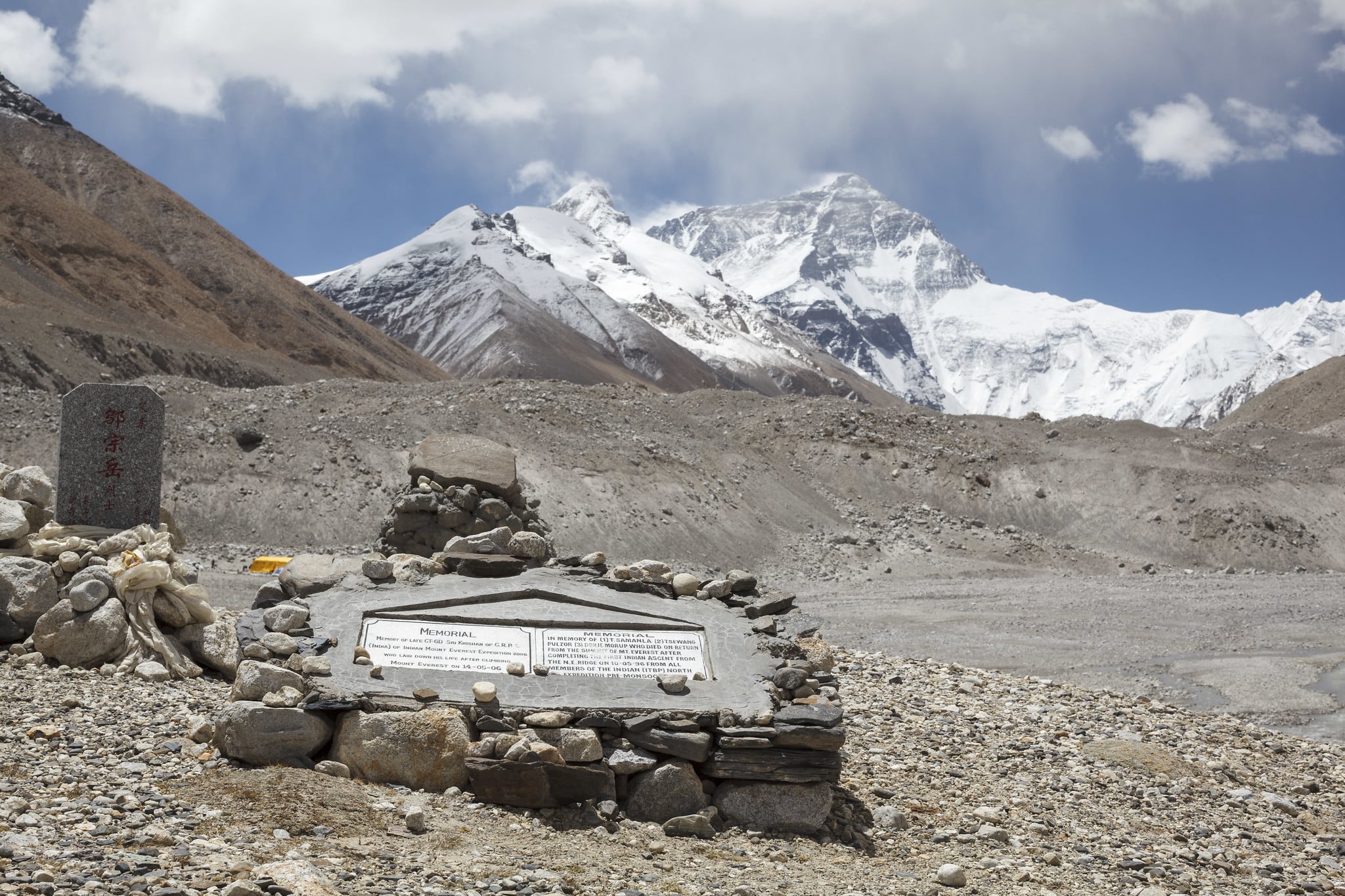
There are memorials created commemorating Indian climbers and sherpas, such as “Green Boots,” who lived in the vicinity of Mushroom Rock for many years. During summit night, spotters and climbers can use mushroom rock as a landmark on the Ridge to measure how far they have progressed. This is where oxygen is exchanged.
To pay tribute to mountaineers who have passed away while attempting to scale Mount Everest, the Everest Memorial in Thukla acts as a memorial. A powerful reminder of the difficulties and dangers involved in climbing the highest mountain in the world, it stands as a remarkable monument.
A tiny village in the Khumbu area of Nepal, Thukla is sometimes referred to as Dughla. It is situated at an elevation of around 4,620 meters (15,157 feet). Ascenters make their way to Everest Base Camp by way of this path, which is located along the route on the way to Lobuche, which is located above Thukla hamlet.
The tragic story of Tsewang Paljor also known as Green Boots
Mount Everest. The tallest mountain on Earth has taken the lives of more than 300 climbers since 1924. Not only does the mountain claim bodies, but it also preserves them. Once the bodies are frozen, they become attached to the mountain and stay there permanently. One of its famous residents is Green Boots, who fell victim to the furious blizzard in Everest’s history in May 1996.
Timeline of events that led to the death of the now famous Green Boots in 1996
As a person born and raised around Mount Everest, the Himalayan ranges, it was just a normal day for Tsewang Paljor, before embarking on his expedition on this fateful day of May 10, 1996. What came ahead was unbeknown to Mr Tsewang Paljor nor did he know he would become the famous body on Everest popularly known as Green Boots. Below, we have summarised how this tragedy unfolded to the unfateful expedition team on Everest that day.
- May 10, 1996:
- Subedar Tsewang Smanla, Lance Naik Dorje Morup, and Head Constable Tsewang Paljor, part of the Indo-Tibetan Border Police (ITBP) expedition, are caught in a blizzard just short of the summit of Mount Everest.
- Three members of the team decide to turn back, but Smanla, Morup, and Paljor continue their ascent towards the summit.
- Around 15:45 Nepal Time:
- Smanla, Morup, and Paljor radio to their expedition leader that they have reached the summit.
- They leave offerings of prayer flags, khatas, and pitons at the summit. Smanla decides to spend extra time for religious ceremonies, instructing the other two to move down.
- After 15:45 Nepal Time:
- There is no further radio contact with the climbers.
- Team members at lower camps observe two headlamps moving slightly above the Second Step at 8,570 meters (28,117 feet), but none of the climbers return to the high camp at 8,300 meters (27,231 feet).
- May 10, 1996 (Evening):
- A team of Japanese climbers from Fukuoka, unaware of the missing Indians, encounter others on the trail whom they mistake for members of a climbing party from Taiwan.
- During their descent, they report seeing an unidentifiable object above the Second Step and one person on a fixed rope below the First Step.
- They exchange greetings with an unidentifiable man standing nearby.
- At 16:00, they learn from an Indian in their group that three climbers are missing and offer to join the rescue, but are declined due to bad weather.
- May 13, 1996:
- The Fukuoka team sends a second party to the summit, where they see several bodies around the First Step but continue to the summit.
- After the Expedition:
- Controversy arises over the actions of the Fukuoka team, with initial claims that they had pledged to help with the search but pressed forward with their summit attempt.
- The Japanese team denies abandoning or refusing to help the missing climbers, a claim accepted by the Indian-Tibetan Border Police.
- Captain Kohli of the Indian Mountaineering Federation retracts his claim that the Japanese had reported meeting the Indians on May 10.
How did Green Boots die?
Just like most climbers that die on Mount Everest, it is apparent that the reason why Tsewang Plajor who was later popularly known as Green Boots died of exhaustion, oxygen depletion and hypothermia that is why he went to shield himself from the harsh weather by lying in the cave below the summit of Everest.
Where is Green Boots located?
Green Boots’ body can be found in a cave at an altitude of 8,500 meters and it has become one of the landmarks for those who head up the mountain from the northern side.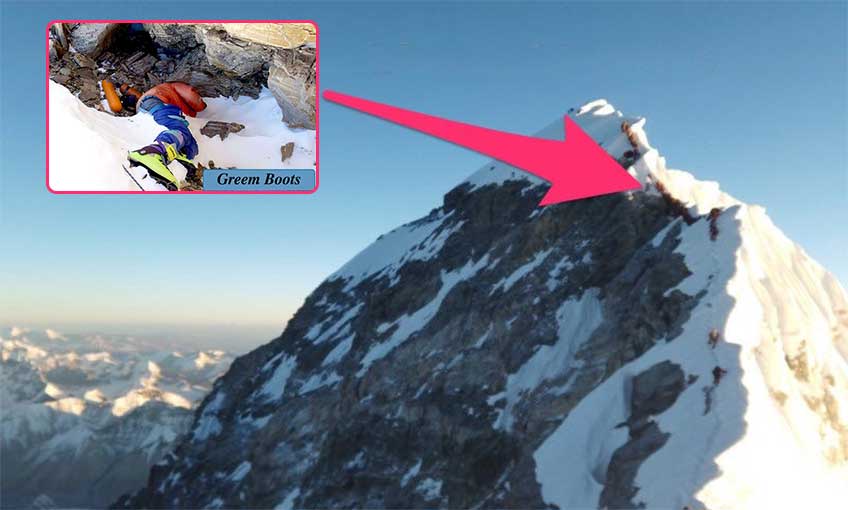
So who was Green Boots?
Not many know the real story behind his life and what led him to climb Everest. Let’s find out the real story of green boots in this article.
The unnamed climber’s corpse that became a marker on Mount Everest’s primary Northeast ridge route was dubbed “Green Boots.” Although the man’s identity has not yet been confirmed, it is thought that he is Tsewang Paljor, an Indian climber who perished on Everest in 1996. The green Koflach climbing boots on his feet are where the moniker “Green Boots” first appeared. Up until it was relocated in 2014, all excursions from the north side discovered the body coiled in the limestone alcove cave at 8,500 meters (27,900 feet).
The body gained notoriety over time for its location on the north route as well as its connection to David Sharp’s passing. In 2014, members of a Chinese expedition relocated Green Boots to a less noticeable place.
Read also: The tragic story of Francys Arsentiev, the sleeping beauty of Mount Everest
About Tsewang Paljor
Tsewang Paljor is the real name of Green Boots. He grew up in Lakhit but was born on April 10, 1968, in Ladakh, India, a region most renowned for its stunning scenery, clear sky, highest mountain passes, exhilarating adventure pursuits, Buddhist Monasteries, and festivals.
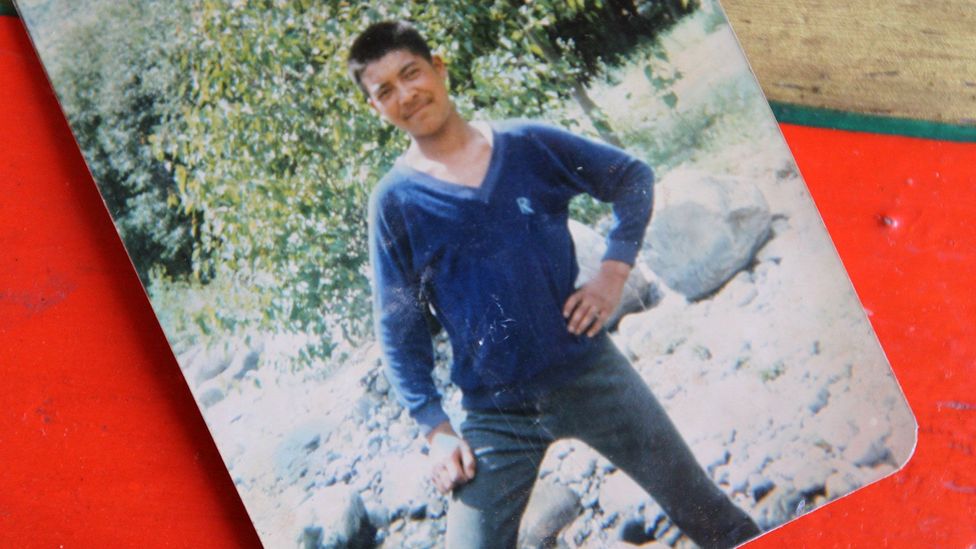 Tsewang Paljor, an Indo-Tibetan Border Police officer, was just 28 years old when he died.
Tsewang Paljor, an Indo-Tibetan Border Police officer, was just 28 years old when he died.
In childhood, he was quiet but also kind and compassionate. He was a shy guy and as the eldest son, he felt pressure to provide for his family, which was struggling to make ends meet. So after completing 10th grade, he dropped out of school to help support his family. He grew up around the mountains in his small village. During that era, girls completed school education while boys would quit midway by 8th grade or so to search for employment and greener pastures. Most of the dropouts became drivers or joined the tourism industry, or enlisted in the army. Despite being attractive, Paljor never had a girlfriend during his teenage years, primarily due to his shyness. In fact, he once confided in his brother, expressing his desire to dedicate his life to something greater than himself rather than pursuing marriage.
Soon after quitting school, he joined Indo-Tibetan Border Police which was formed in 1962 in response to increasing hostilities from China. The men who worked in the Indo-Tibetan Border Police service fully specialized in high-altitude landscapes. During his time on the job, Paljor climbed several peaks.
His mother Tashi Angmo was very supportive of her son’s position at the Indo-Tibetan border Police Service. When Paljor was chosen to join an elite group of climbers embarking on a risky, yet monumental mission—to become the first-ever Indians to summit Mount Everest from its north side—he chose not to disclose his true destination to her. His mother recalls, “He told a little white lie, claiming he was going to climb a different mountain.” However, he confided in some friends about his actual endeavor, and news eventually reached his family.
Related: David Sharp, the controversial death on Mount Everest
Green Boots’ last climb and the 1996 Tragedy
In 1996, the Indo-Tibetan border police formed an elite group of climbers to summit Mount Everest on the north side. Tsewang Paljor was picked up as one of the members. He chose not to reveal his true destination to his family, but his family got to know anyway, by chance. His mother begged him not to go on that expedition that would later claim his life, but he told his mother he had to. According to Tashi Angmo, he must have thought if he summited Everest, it would bring benefits for the family. His younger brother-in-law, Namgyal was amongst them at the time when he was due to leave for Everest. He was in Delhi, India, and gave his brother a blessing before telling him goodbye. He was the last family member to see Paljor alive. Apart from Paljor other members of the mission, Tsewang Smanla and Dorje Morup, and deputy leader Harbhajan Singh. Aside from Harbhajan Singh, the other three were Ladakhi. Paljor was young, strong, and experienced, but the risks on Mount Everest present a multitude of ways to take the life of even the most well-prepared and experienced climber. Falls, avalanches, snow storms, hypothermia, and more. Sudden deaths from heart attacks, strokes, irregular heartbeat, asthma, or exacerbation of other pre-existing conditions are not uncommon. And lack of oxygen can trigger acute pulmonary or cerebral edema, life-threatening conditions that occur when blood vessels begin leaking fluid into the lungs or brain. The Indian expedition was well connected on the mountain with a luxurious communal end that all climbers, regardless of their nationality, are welcome to visit.
Commandant Mohinder Singh was leading the team. He selected Paljor to be part of the summit team for his strength and enthusiasm along with seven other climbers from the Indo-Tibetan Police border force including deputy leader Harbhajan Singh. As claimed by Mohinder Singh, Paljor loved to attempt typical rock climbs. He looked like a monkey when he climbed.
His favourite meal was roast chicken and used to sing in his free time. He was always volunteering to take on typical tasks.
Their troubles began on the morning of May 10th and it seems like they woke up on the wrong foot. They were at camp and were to push for the summit at 3:30 am. But due to strong winds and oversleeping, they started out at 8 am losing precious time. By 2:30 pm, the team had made significant progress, but the wind had begun to pick up again. Team Leader had given them strict orders to turn around at 2:30 pm or 3 pm, at least so as to make it back to them more safely. Around 2:30 pm Harbhajan Singh was lagging behind his climbing partners who are further up on the mountain. He kept signaling them to stop and turn around, but either they did not see him or ignored him. Frostbitten and exhausted Singh returned alone. At around 3 pm on that afternoon, Singh awaiting news from his team, heard his walkie-talkie ring. It was Smanla who announced that they were pushing for the summit. He reminded them about the turnaround time and told them to return but Smanla insisted that they were just an hour away from the summit and all three were feeling fit. Singh urged them not to be overconfident. He told them that the weather was turning bad, but Smanla shrugged off the warnings and put Paljor on the phone.
The radio then went blank they were probably suffering from summit fewer in an overwhelming desire to reach the summit that caused climbers to go against the safety guidelines. It wasn’t until 5:35 pm that Singh heard from his team. Smanla announced that he, Paljor, and the others were now at the summit. Though Singh again reminded them of the importance of descending immediately, he was himself super excited to call up New Delhi and declare the team’s victory. The celebration began both in New Delhi and at the lower camp. The men had just set a record for the country but the celebration was short-lived. Shortly after Smanla called the weather which had been steadily deteriorating, worsened. A blizzard struck the mountain, blocking everything and snow and wind. Singh kept praying and hoping that his men would come back but they never did. Around 8 pm sick with worry, Singh approached a nearby Japanese commercial climbing team. Two of their climbers Hiroshi and Isaac Shirakawa were at camp 6 and we’re going to push for the summit that night. Singh spoke to the Japanese leader with the help of a Sherpa who translated the conversation and the leader radioed his climbers and reassured saying that they will do all they could to help the stranded Indian climbers near the summit. The two Japanese climbers hit out in the morning after the storm subsided and around 9 am, there were reports that the two climbers had been seen, frostbitten and lying in the snow. Singh listened in shock. Two hours later, the two Japanese climbers and their three Sherpas passed Smanla and Paljor but did not render any help. The Japanese team later contested this version of nuance. They held a press conference in Japan and issued an official report stating that Hiroshi and Shirakawa had never been informed that the Indian climbers were in any sort of trouble, and while pushing for a summit where they had encountered several climbers and none of them looked as if they were dying.
They also emphasized that above 8000 meters, every climber should be held accountable for his own actions, even on the brink of death. The climbers’ Code of Ethics issued by an international climbing and mountaineering Federation specifies helping someone in trouble has absolute priority over reaching goals we set for ourselves in the mountains. Most take this to heart as saving one life is more important than summiting Everest 100 times. We can always go back and summit but a lost life never comes back.
Paljor met his tragic end after becoming separated from his body in a furious Blizzard with strong winds, he sought refuge from the snowstorm and crawled toward a small cave. He tried to shield himself from the storm but to no avail. He tried making contact until he died. His body went missing in 2014 presumed to be buried or someone might have taken it. It’s believed that somebody actually buried his body with snow and stones upon Paljor’s family’s request. Nobody saw green boots between 2014 and 2017 while climbing from the north side. However, in 2017, it came to be visible again with more rocks surrounding the body. The body is still in the same spot and Green Boots now is a very fine marker that climbers use to gauge how close they are to the summit. Ten years later, Green Boots in the cave became even more famous when a 34-year-old British climber David Sharp passed away in the same cave. There was an outcry in the media about Sharp who was found huddled there. He was climbing alone and succumbed to hypothermia. About 40 climbers passed him that day, but they did not realize he was on the brink of death. They either believed him to be Green Boots or thought he had already died. By the time people discovered Sharp needed help, it was too late. His body lay there for a year, after which it was removed from the site at the request of his family.
The story of Paljor a.k.a Green Boots tells that on Everest or any other mountain, you have to follow mountain safety guidelines. Don’t be overconfident, and always listen to the mountain guides and know when to turn back. As in Paljor’s case. He and his climbing partners did not listen to their leader ignored the instructed turnaround time and pushed for the summit. Had they listened to Singh and turned around, they would have been safe and alive. Mountains don’t kill people. People kill themselves out of negligence and arrogance, though sometimes it is just by accident.
Green Boots was actually a cop
The fact that Paljor and his family became members of the ITBP was a source of pride for them. It presented him with the chance to serve his nation while also exploring his interest in mountaineering at great altitudes.
It is the major responsibility of the Indian Border Police (ITBP) to patrol and safeguard the 2,167-mile (3,488-kilometer) border between India and China, which is located in a region that is characterized by tough and dangerous terrains at high altitudes. The force is accountable for stopping any unlawful operations that occur over the border, assuring the protection of locations that are located in distant border regions, and keeping a continual vigil against any security concerns that may arise.
During his time in the ITBP, Paljor held the position of head constable, which is comparable to the rank of sergeant in other nations’ police forces. Through the training and experience he gained from his employment as a cop, he was able to successfully complete the most difficult exam of all: climbing Mount Everest.
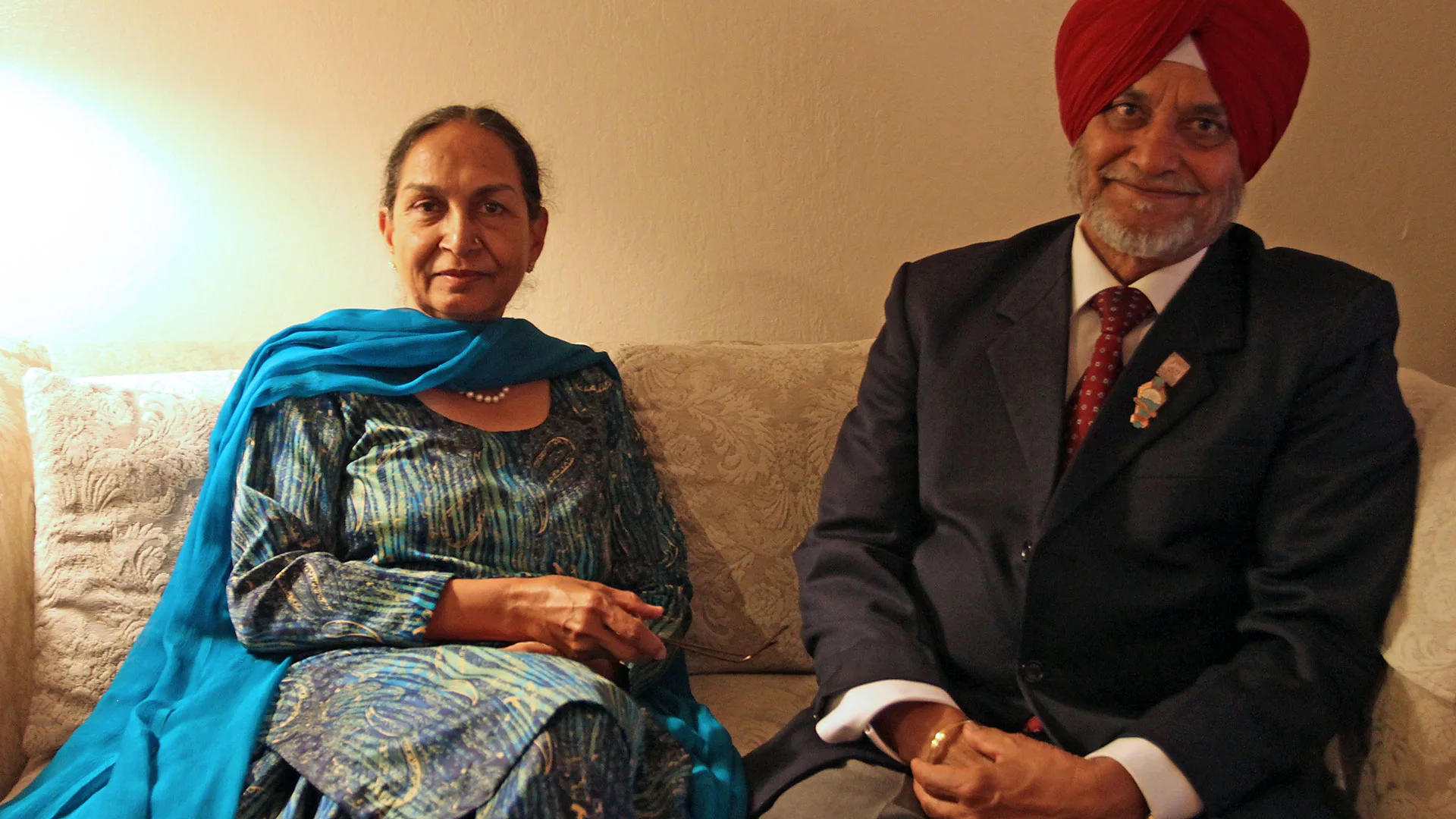 Commandant Mohinder Singh, the leader of the team, currently resides in a location near San Francisco and is now responsible for managing an apartment complex. Looking back on their expedition, he remembers that they were considered the best in the world. Singh specifically chose Paljor to join the initial group of climbers aiming to reach the summit. Accompanying Paljor were his climbing partners Tsewang Smanla and Dorje Morup, as well as deputy leader Harbhajan Singh. Singh believes that Paljor viewed him as a father figure due to his strength and enthusiasm. He describes Paljor as talkative, likening him to a child, and someone who enjoyed attempting challenging rock climbs. Singh comments on Paljor’s climbing skills, saying that he resembled a monkey when he climbed. Additionally, Singh remembers Paljor’s affection for roast chicken, his habit of singing during his free time, and his willingness to take on difficult tasks. According to Singh, Paljor was always eager to be of assistance. Despite Singh’s confidence in the abilities of Paljor, Morup, and Smanla, who were all from Ladakh and had proven themselves in their previous endeavors, the expedition faced a series of mistakes. Singh later documented these errors in his official report. The problems began on the morning of May 10th, when the team encountered strong winds and ended up oversleeping. As a result, instead of leaving Camp VI at the planned time of 3:30 AM, they departed at 8:00 AM. Due to this significant delay, they decided to ascend further up the mountain in order to set up ropes, rather than attempting the summit. The decision was made in order to avoid descending through the dangerous Death Zone, located above 8,000 meters, where climbers often lose their lives.
Commandant Mohinder Singh, the leader of the team, currently resides in a location near San Francisco and is now responsible for managing an apartment complex. Looking back on their expedition, he remembers that they were considered the best in the world. Singh specifically chose Paljor to join the initial group of climbers aiming to reach the summit. Accompanying Paljor were his climbing partners Tsewang Smanla and Dorje Morup, as well as deputy leader Harbhajan Singh. Singh believes that Paljor viewed him as a father figure due to his strength and enthusiasm. He describes Paljor as talkative, likening him to a child, and someone who enjoyed attempting challenging rock climbs. Singh comments on Paljor’s climbing skills, saying that he resembled a monkey when he climbed. Additionally, Singh remembers Paljor’s affection for roast chicken, his habit of singing during his free time, and his willingness to take on difficult tasks. According to Singh, Paljor was always eager to be of assistance. Despite Singh’s confidence in the abilities of Paljor, Morup, and Smanla, who were all from Ladakh and had proven themselves in their previous endeavors, the expedition faced a series of mistakes. Singh later documented these errors in his official report. The problems began on the morning of May 10th, when the team encountered strong winds and ended up oversleeping. As a result, instead of leaving Camp VI at the planned time of 3:30 AM, they departed at 8:00 AM. Due to this significant delay, they decided to ascend further up the mountain in order to set up ropes, rather than attempting the summit. The decision was made in order to avoid descending through the dangerous Death Zone, located above 8,000 meters, where climbers often lose their lives.
Tsewang Paljor’s Home
Plajor originates from a location known as Sakti, which is inhabited by a mere 300 households, where familiarity exists among all residents.
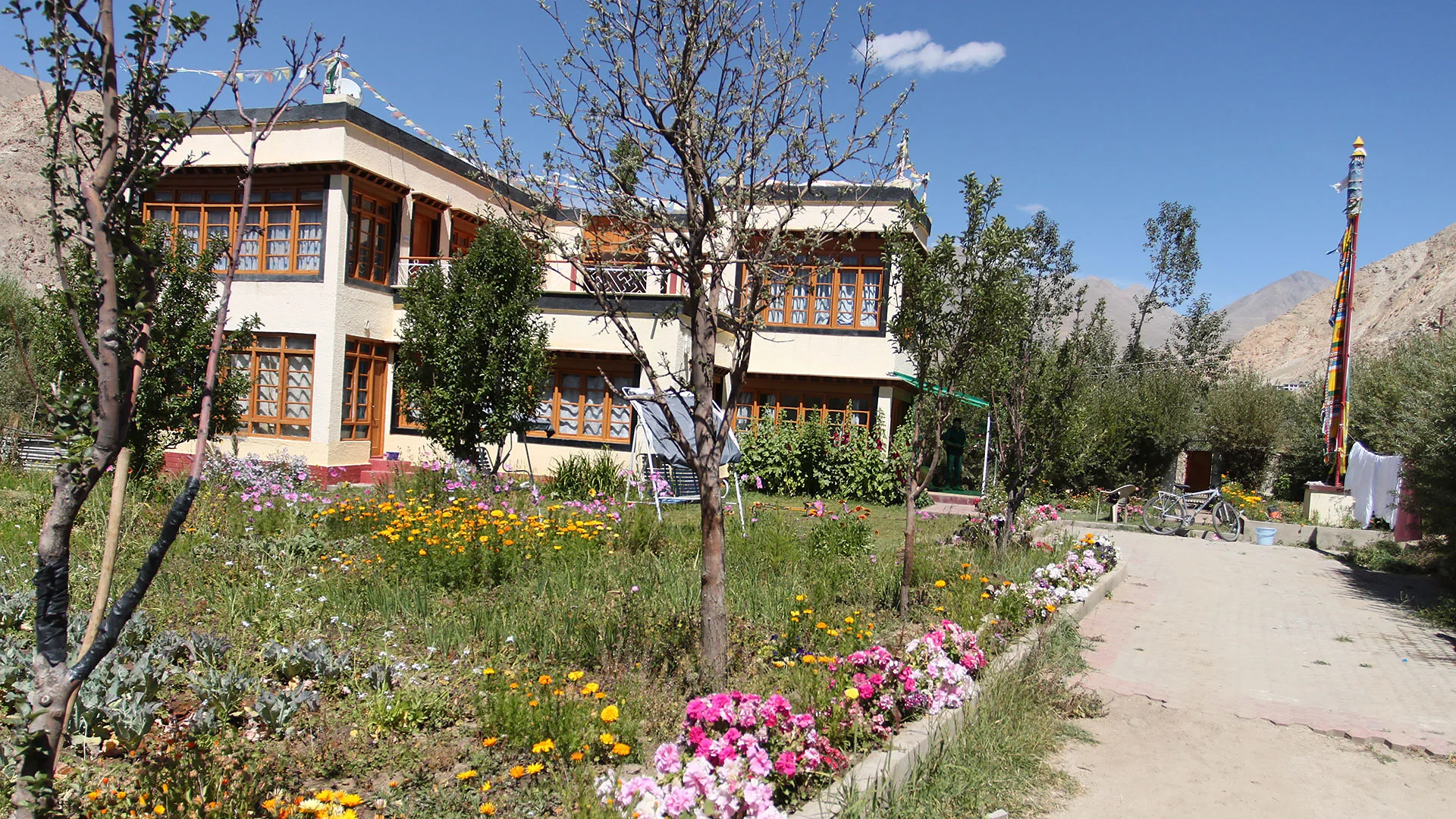 Paljor, a quiet middle child among five siblings, gained a reputation in the village for being polite and compassionate. He possessed a large heart and a natural inclination towards kindness. As the eldest son, Paljor felt the weight of responsibility to support his struggling family, who lived on a modest farm. Therefore, after completing 10th grade, he made the decision to quit school and attempt to join the Indo-Tibetan Border Police (ITBP). The ITBP’s campus stood nearby in Leh, the dusty capital of Ladakh. Established in 1962 in response to escalating tensions with China, the members of this armed force specialize in operating in high-altitude terrains. India’s border with its dominant neighbour stretches across the Himalayas, making such expertise crucial. To the immense joy of Paljor and his family, he successfully passed the selection process. While Paljor had already accomplished successful summits of other peaks in his career and had his certificates and awards displayed on Tashi Angmo’s shelves, Everest seemed undeniably treacherous to her. She pleaded with her son not to go, but he insisted, firmly believing that climbing Everest would provide benefits for his family. He must have thought that conquering Everest would bring prosperity to his loved ones. In contrast, Paljor’s younger brother, Thinley Namgyal, did not share Tashi Angmo’s worries. He viewed his brother as the epitome of strength, describing how they used to play around and kick Paljor’s tummy, which felt as solid as a rock. Thinley always saw him as a sort of superhero. As a monk himself, Thinley had the opportunity to meet Paljor in Delhi a few days before his departure. He blessed his brother before bidding him farewell, remembering how Paljor was full of excitement to embark on his journey to Tibet. Thinley shares, “He had just passed his health exam, and he was so thrilled about going to Tibet. He displayed no nervousness; he was genuinely happy about all of this.” Ultimately, Thinley was the last family member to see Paljor alive.
Paljor, a quiet middle child among five siblings, gained a reputation in the village for being polite and compassionate. He possessed a large heart and a natural inclination towards kindness. As the eldest son, Paljor felt the weight of responsibility to support his struggling family, who lived on a modest farm. Therefore, after completing 10th grade, he made the decision to quit school and attempt to join the Indo-Tibetan Border Police (ITBP). The ITBP’s campus stood nearby in Leh, the dusty capital of Ladakh. Established in 1962 in response to escalating tensions with China, the members of this armed force specialize in operating in high-altitude terrains. India’s border with its dominant neighbour stretches across the Himalayas, making such expertise crucial. To the immense joy of Paljor and his family, he successfully passed the selection process. While Paljor had already accomplished successful summits of other peaks in his career and had his certificates and awards displayed on Tashi Angmo’s shelves, Everest seemed undeniably treacherous to her. She pleaded with her son not to go, but he insisted, firmly believing that climbing Everest would provide benefits for his family. He must have thought that conquering Everest would bring prosperity to his loved ones. In contrast, Paljor’s younger brother, Thinley Namgyal, did not share Tashi Angmo’s worries. He viewed his brother as the epitome of strength, describing how they used to play around and kick Paljor’s tummy, which felt as solid as a rock. Thinley always saw him as a sort of superhero. As a monk himself, Thinley had the opportunity to meet Paljor in Delhi a few days before his departure. He blessed his brother before bidding him farewell, remembering how Paljor was full of excitement to embark on his journey to Tibet. Thinley shares, “He had just passed his health exam, and he was so thrilled about going to Tibet. He displayed no nervousness; he was genuinely happy about all of this.” Ultimately, Thinley was the last family member to see Paljor alive.
How the news about Green Boots’s disappearance was broken
Tashi Angmo finds it difficult to recall the days that followed her son’s tragic death. However, she has a clear memory of the visit from two officers of the Indo-Tibetan Border Police who came to her door to confirm her identity as Paljor’s mother. These officers delivered devastating news, informing Tashi that an accident had occurred on Mount Everest and her son was now missing. They assured Tashi that a battalion and even a helicopter had been deployed for the search, but unfortunately, Paljor seemed to have disappeared without a trace. Looking back, Tashi wonders if the officers were being honest in their statements, given the lingering uncertainty. She contemplates, “Maybe they truly did their best to find him, or maybe they didn’t.” She firmly believes that with enough determination, Paljor could have been located and rescued. Since Paljor’s body was not found and the officers declared him as “missing” rather than confirmed deceased, Tashi Angmo took it upon herself to visit different local monasteries in the next two days. She engaged in thimchol, a spiritual offering for well-being. Expressing her disappointment, Tashi says, “It would have given me some comfort if they had found his body. I held onto the hope that he would come back since no remains were ever found.” However, Tashi’s family eventually convinced her to face the painful reality. The rescue of Paljor was an impossible dream, and his return home was simply not going to happen. “The term ‘missing’ is essentially used by the ITBP to console you,” her loved ones gently explained to her. Following this, the family made arrangements for a funeral to bid Paljor their final farewell. They also attended a ceremony organized by the ITBP to honour the three Ladakhi men. During this time, Tashi Angmo admits, “I felt lifeless, like a mere corpse.” To add to her grieving process, Tashi started feeling bitterness towards the ITBP. Despite the officials’ promises to take care of the family’s needs, their actions fell far short. They only received a small insurance amount of $3,690 and subsequent pension payments every other month, totalling around $36.00.
How old was Green Boots when he died?
Since Paljor was born in 1968 and died in 1996, he was at a tender age of only 28 years old.
Why did they name him “Green Boots”
Because of the green (Koflach) climbing boots on his feet, he was named “Green Boots.”
Picture of Green Boots
Here is a picture of the body of Green Boots, frozen in a cave on Mount Everest where he died in fetal position.
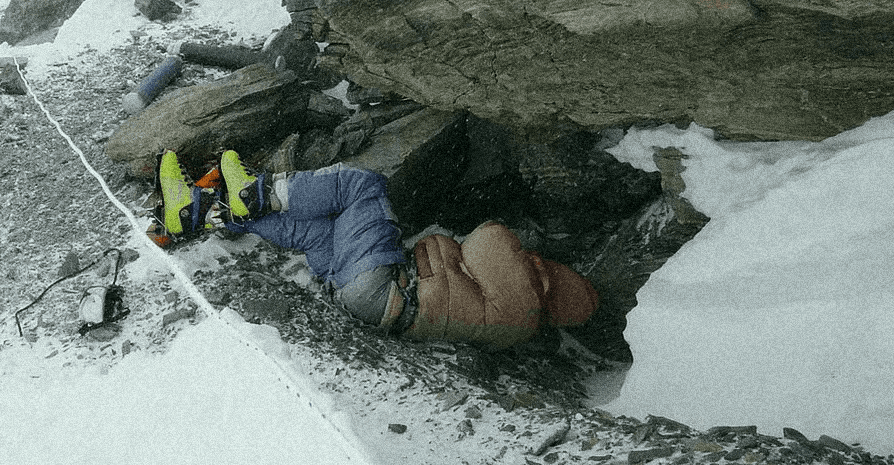
Green Boots’ Face
Yes, Green Boots has a name, and here we want to show you that there is a face to his name as well. Below is the passport picture of Tsweang Paljor, popularly known as Green Boots on Everest.
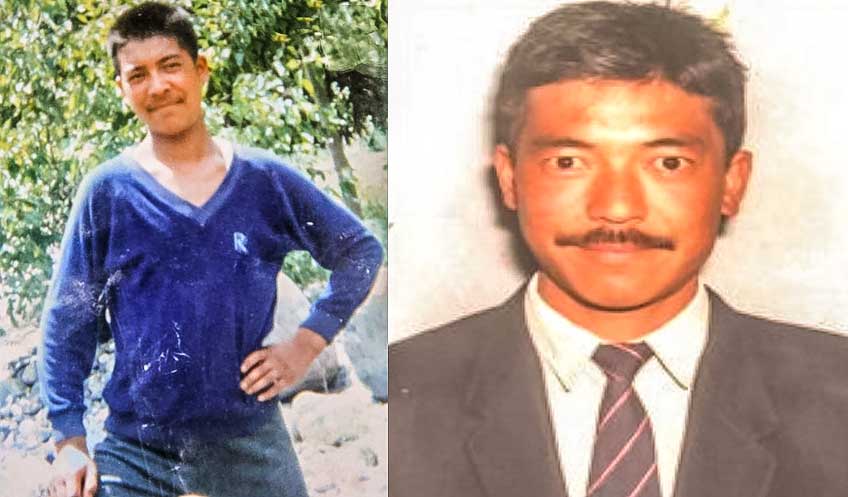
Green Boots Cave
The Green Boots cave is a frigid cave that can be found near the peak of Mount Everest on the Northeast ridge, standing at an elevation of 8,500 meters (27,900 feet). This cave is situated beside the primary climbing route from the north, positioned around 450 meters (1,480 feet) below the summit and 250 meters (820 feet) above Camp 4.
The cave where he sought refuge is famously referred to as Green Boots Cave. It is a notable landmark for climbers who follow the Northeast ridge route as it indicates their proximity to the summit. Interestingly, David Sharp was also discovered in this cave, initially believed to have passed away. However, upon closer examination, a climber observed steam emanating from his breath. In an attempt to revive him, they exposed him to the sun in the hopes of warming him and assisting his descent from the mountain. Sadly, he did not survive. Nowadays, Green Boots is no longer spotted in his cave as someone has pushed him over the mountain, thus rendering him obsolete as a marker.
Which boots was Tsewang Paljor wearing on his final Everest climb?
Tsewang Paljor, also known as “Green Boots,” was famously identified by the lime green Koflach Arctis expedition mountaineering boots he was wearing during his final climb on Mount Everest in 1996 like the ones shown below.
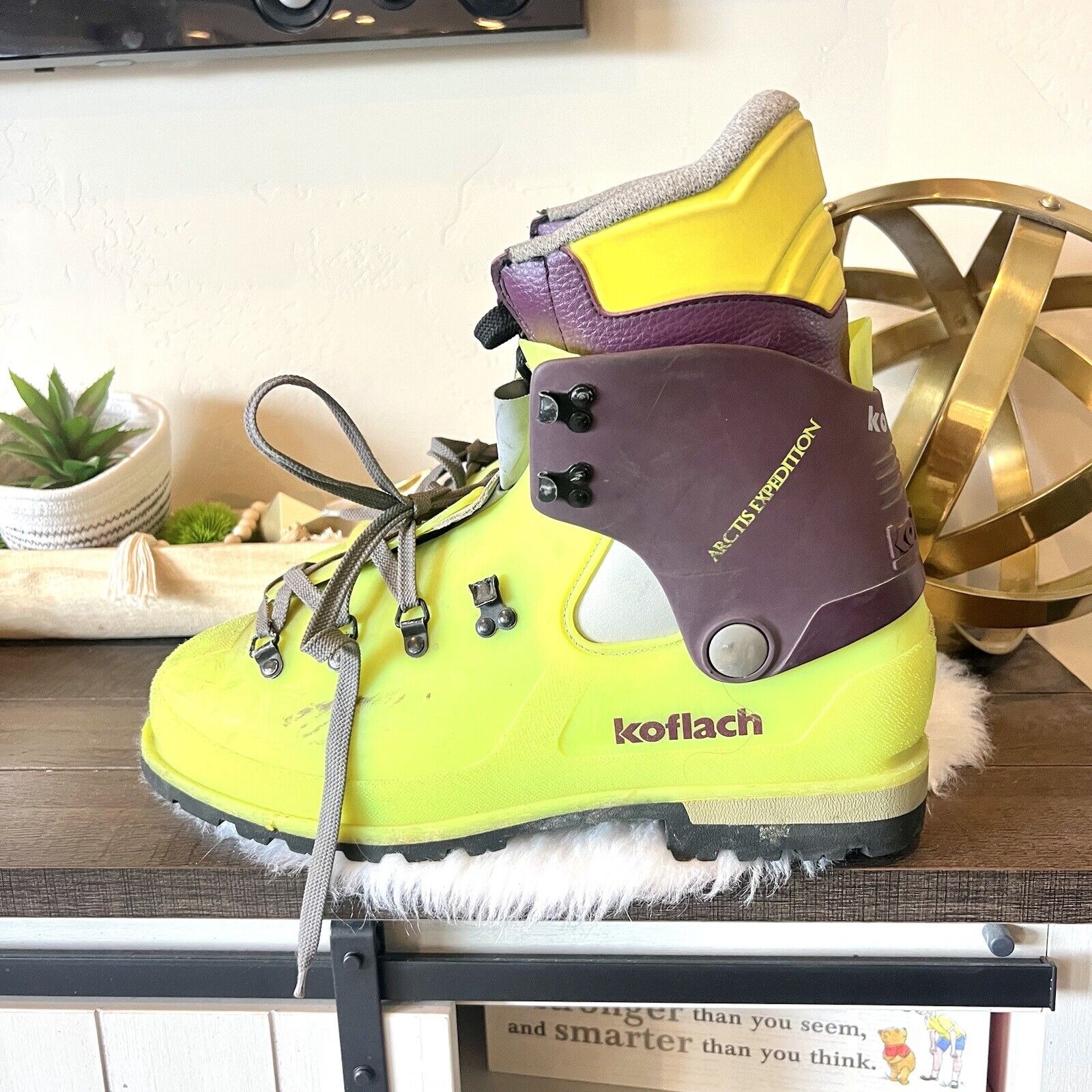
Discovery of Green Boots
It is a well-known fact that some of the people who have died on Everest have been stripped of their clothes and equipment. This happened most likely in 1996, or at least it was first mentioned then. When Green Boots died, climbers usually had rounded the 9/15 couloir, which was steeper than the normal route by 80 meters, but had fewer crevasses. Since the rope was damaged, climbers going through the northeastern couloir had to use the same damaged rope. Given that large amounts of oxygen were present, it would have been possible for a climber descending to bait the following expeditions but that did not happen.
Climbers noticed that all the ones who tried to climb Mount Everest via the northeastern route had to pass the body of an Indian climber. There were three different descriptions, and it took German climbers to show that the climbers had passed by one and the same body – that of Tsewang Paljor. Tsewang climbed the mountain on May 10, 1996, as a part of the Indo-Tibetan Border Police (ITBP) team, and on the return trip, he fell victim to “Sudden Death” near a small cave under the mountain black rock below the summit. His frozen body stayed on the mountain for more than a decade, receiving the nickname “Green Boots” for the fluorescent green mountaineering boots he wore.
Paljor’s sibling, Thinley, vividly remembers the instance when he stumbled upon the moniker, accompanied by images, in 2011: “While surfing the web, I stumbled upon this peculiar title they bestowed upon him – Green Boots or something along those lines,” he recounts. “This revelation distressed and startled me immensely, and I harbored an intense desire to shield my family from this distressing information.” “To be honest, it truly burdens me to even glance at those pictures online,” he confesses. “I am overwhelmed with a profound sense of powerlessness.”
Identity of Green Boots
The identity of Green Boots is unclear. Many researchers have speculated Green Boots is Tsewang Paljor, who died during the 1996 Mount Everest disaster. However, the link between Green Boots and Tsewang Paljor has not been positively confirmed. Green Boots has since been removed from the cave where his body resided before. However, Chinese authorities have not yet declared his identity. Other suggestions for the identity of Green Boots include Tsewang Samanla, a Tsewang’s companion; Dorje Morup, another Indian mountaineer; or some of the other climbers who died during the disaster. Tsewang and his companions were wearing green Koflach boots before they died.
There were efforts to retrieve Green Boots’ body before
After learning about Woodall’s attempts to relocate Francys’ body, Tswang Paljor’s brother Thinley reached out to him to discuss the possibility of doing the same for his brother. Woodall finds it peculiar that Paljor was part of a large Border Police team in ’96, but they abruptly withdrew and left him behind. Furthermore, Woodall notes that the Indian Border Police have carried out other Everest expeditions and reached the summit, yet they still left Paljor’s body there. However, the ITBP claims that Paljor’s body is firmly lodged and, additionally, they cannot confirm if it belongs to Paljor or even an Indian individual. Deepak Pandey, an ITBP public relations officer, explains that opinions are divided on the origin of the body. Recognizing that he won’t receive assistance from the ITBP, Thinley offers to financially support Woodall’s mission to relocate Paljor, but he underestimates the significant cost, around $70,000. Woodall has already spent his own funds attempting to move Francys, leaving him unable to afford another solo mission. Thinley prays that his mother will never discover the situation with Green Boots, as it would deeply upset her. Thinley had nearly lost all hope of properly laying his brother to rest until 2014, when Paljor suddenly disappeared. It wasn’t just Green Boots’ body but many others on the north side, including the “rainbow ridge,” named for the colorful suits worn by fallen climbers, seemed to have vanished. Previous estimates indicated that up to 10 bodies were visible on the final push to the summit, but in 2014 only two or three were seen. The circumstances surrounding the removal of these remains remain unclear, but it is speculated that the Chinese Tibetan Mountaineering Association and the Chinese Mountaineering Association, responsible for Everest’s north side, may have been involved. Prior to his climb, the speaker had suggested moving the bodies to officials at a dinner, unaware that no one had raised the issue with those in charge before.
Was Green Boots Tsewang Paljor or Dorje Morup?
Green Boots, widely believed to be Tsewang Paljor, an Indian mountaineer, gained his name due to the distinctive green Koflach boots he wore during his ill-fated summit attempt in 1996. However, it is possible that the body attributed to Green Boots might actually be that of his fellow climber, Dorje Morup. The tragic Everest disaster of 1996 claimed the lives of eight climbers: five from the Adventure Consultants and Mountain Madness expeditions on the southeast route, and three on the northeast route, belonging to the Indo-Tibetan Border Police (ITBP) expedition from India. Led by Commandant Mohinder Singh, the ITBP team achieved the first Indian ascent of Everest from the east side. While it is widely accepted that Green Boots represents Head Constable Tsewang Paljor, an article published in 1997 by P. M. Das, the deputy leader of the expedition, titled “The Indian Ascent of Qomolungma by the North Ridge,” raises the possibility that the body could instead belong to Lance Naik Dorje Morup, also known as Dorje. Das recounts an incident where two climbers were seen descending in the evening, only to disappear from sight shortly after. The following day, the leader of the second summit group reported encountering Morup struggling between the First and Second Steps. According to Das, Morup, despite suffering from frostbite, refused to wear gloves and encountered difficulties in unclipping his safety carabiner at anchor points. The Japanese team provided assistance in guiding him to the next section of the climb.
At a later time, the Japanese group discovered the lifeless body of Tsewang Smanla above the Second Step. During the return journey, Morup’s progress remained slow, and it is believed that he perished in the late afternoon of May 11. Das mentions that the body of Paljor was never located.
On their way back from the summit, a second group from ITBP encountered the bodies of Smanla and Morup. Das describes their discovery of Morup, who was found “lying under the shelter of a boulder near their descent path, in close proximity to Camp 6,” with his clothing intact and his rucksack by his side.
The Green Boots Enigma
Green Boots, the unidentified climber who tragically met his demise on Mount Everest during the ill-fated 1996 expedition, has captured the imagination of climbers and adventurers around the world. One of the most enduring questions is the true identity of this fallen mountaineer.
Tsewang Paljor Theory
It is widely believed that Green Boots is the body of Head Constable Tsewang Paljor. Tsewang Paljor was a member of the Indian expedition team that embarked on the perilous journey to conquer Mount Everest in 1996. According to accounts, he was last spotted descending the mountain alongside another climber by the light of head torches. Tragically, Tsewang Paljor’s body was never found, leaving room for speculation and uncertainty.
Dorje Morup Controversy
However, an alternative theory proposes that Green Boots could instead be Lance Naik Dorje Morup, also known as Dorje. According to an article titled “The Indian Ascent of Qomolungma by the North Ridge” published in the Himalayan Journal by P. M. Das, there are accounts suggesting that the body attributed to Green Boots may actually be that of Dorje Morup. The article recounts the events of the expedition, mentioning Dorje Morup’s difficulties in descending, his refusal to put on gloves despite frostbite, and his slow progress. The article indicates that Dorje Morup was discovered lying under the shelter of a boulder near their line of descent, close to Camp 6, with intact clothing and his rucksack by his side.
Analyzing the Evidence
The conflicting accounts regarding the true identity of Green Boots present a perplexing challenge. The extreme conditions and the passage of time have made it difficult to ascertain with certainty whether Green Boots is Tsewang Paljor or Dorje Morup. The varying testimonies and the absence of conclusive evidence have contributed to the enduring mystery that surrounds this enigmatic mountaineer.
List of other famous people that have died on Mount Everest
The famous people who died on Mount Everest are listed in chronological order, with the most well-known individuals at the top of the list. Some of the persons listed below are famous people who died on Mount Everest, while others are just well-known in their field of endeavor. In any case, Mount Everest is mentioned as the official location of death for every person on this list in any public documents. There is information on each famous person who perished on Mount Everest next to their names, including their birthplace and the year they were born.
This list will provide you with all the information you need to respond to the queries “Which famous persons died in Mount Everest?” and “Which celebrities died on Mount Everest?”
Athletes, musicians, famous people, and significant local leaders are on the list of people who have perished on Mount Everest in the past.
- George Mallory – Dec. at 37 (1886-1924)
- Maurice Wilson – Dec. at 36 (1898-1934)
- Andrew Irvine – Dec. at 22 (1902-1924)
- David Sharp – Dec. at 34 (1972-2006)
- Peter Boardman – Dec. at 31 (1950-1982)
- Rob Hall – Dec. at 35 (1961-1996)
- Scott Fischer – Dec. at 40 (1955-1996)
- Joe Tasker – Dec. at 34 (1948-1982)
- Babu Chiri Sherpa – Dec. at 35 (1965-2001)
- Tomas Olsson- Dec. at 30 (1976-2006)
- Francys Arsentiev – Dec. at 40 (1958-1998)
- Karl Gordon Henize – Dec. at 66 (1926-1993)
- Green Boots – May 1996 at 28 (1968-1996)
![]()

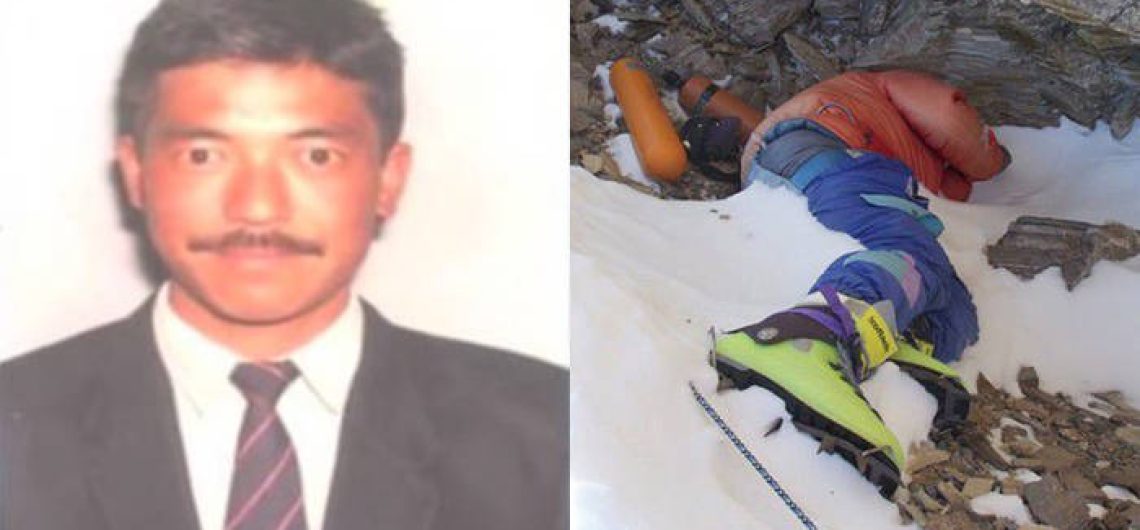
Comments